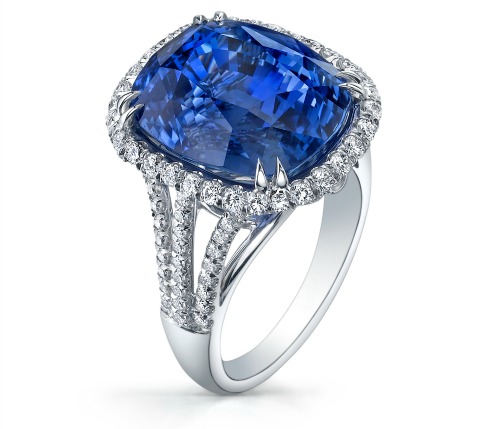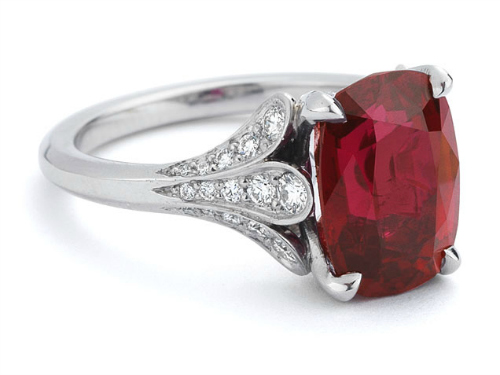Diamonds aren’t everyone’s cup of tea. We get that. For a wide variety of reasons, many engagement ring shoppers opt for precious gemstones other than diamonds every day. Setting the budget issue aside for a second, many folks (including my wife) genuinely prefer coloured gemstones to diamonds.
Diamonds are still viewed by many as the classic and traditional engagement ring gemstone, but there are strikingly stunning and practical alternatives that should definitely be considered if you aren’t dead-set on a diamond for your engagement ring. Most engagement rings that use gemstones other than diamonds for the main setting still use tiny diamonds as accents on the ring. This creates a stunning contrast that is favoured by many!
Unlike other jewellery items, engagement rings are worn every day. Year in… year out. The engagement ring and the gemstones contained therein must be durable enough to withstand the wear and tear of everyday modern life. The Mohs Scale of Mineral Hardness has been in use since 1812 to classify the relative hardness of minerals with a special focus on scratch resistance. Any gemstone with a relative hardness of less than 9 on the Mohs Scale will be too fragile for everyday wear. These softer gemstones will scratch, break, chip and really look exhausted after a few years (even months) if worn all day, everyday. For reference; diamond, being the hardest naturally occurring mineral has a relative hardness grade of 10. Here’s a link to the scale for reference.
Ladies and gentlemen, I proudly present to you… sapphire and ruby!
Sapphire (Mohs Scale: 9 – very hard)

Sapphire is the most popular gemstone variety of the mineral corundum. Trace amounts of iron, titanium, copper and magnesium give sapphire different colours including blue, yellow, orange and green.
The most popular colour of sapphire is definitely the luxurious deep blue variety. It’s been popular through the ages and we don’t see it falling out of favour anytime soon. Blue sapphire has been the engagement stone of choice for many royals and celebrities alike, including Penelope Cruz, Liz Hurley, Victoria Beckham, Kate Middleton and the ever graceful Princess Diana.
Natural sapphires vary greatly in clarity, but due to the deep intensity of the colour present in sapphires, especially the blue ones, impurities are quite hard to spot if the gemstone has been set in a piece of jewellery.
Sapphire prices have rocketed in the past few years and in November 2013 a 114,74ct Royal Blue Burmese Sapphire sold for a whopping $7 223 000 (±R90 000 000) at a Sotheby’s Auction in Geneva. Not too bad! Don’t let this scare you off though… sapphires, real sapphires, have been produced in laboratories for many years and if you opt for the laboratory variety you can be the proud owner of a genuine corundum sapphire at a very decent price. The laboratory created sapphires can only be distinguished by gemologists from the natural occurring variety due to the extreme clarity of the laboratory stones. That’s a good thing, isn’t it?
Ruby (Mohs Scale: 9 – very hard)

Ruby is also a gemstone variety of corundum. Trace amounts of chromium give corundum a blood red to deep pink colour, and this red variety of sapphire is called “ruby”. Although both ruby and sapphire are corundum gemstones they carry very different price-tags and are internationally recognised as two distinct gemstones.
Just as with sapphires, prices of rubies are based on the colour intensity of the stone, the cut grade, weight and the amount of impurities present in the stone. When it comes to colour – deep reds fetch the highest prices.
Top quality rubies can fetch extremely high, even diamond-like, prices. A 29,62ct Burmese ruby ring sold on auction for over $7 338 000 (more than R92 000 000). Once again, you are in luck! Laboratory created rubies are available at a fraction of the price! More information on laboratory created gemstones only 30 seconds ahead.
If you opt for a ruby engagement ring you’re in good company with Priscilla Chan (Mark Zuckerberg’s wife), Sarah Ferguson – The Duchess of York, and A-listers Nicole Richie and Jessica Simpson amongst others.
A Short Introduction To Laboratory Created Gemstones
Although laboratory created diamonds have not gained mainstream traction, laboratory created corundum gemstones (ruby and sapphire) are extremely popular. The laboratory created stones sell at a fraction of the price of the naturally mined gemstones, and as an added benefit they usually appear superior in quality to the mined gemstones. Naturally mined ruby and sapphire often have significant and visible inclusions, whereas the laboratory variety is completely free of these imperfections.
It’s vitally important to understand that the laboratory gemstones are absolutely genuine corundum gemstones. Although the formation process differs from that of the natural occurring gemstones, the end product is exactly the same mineral compound. Gemologists have to rely on a gentlemen’s agreement with laboratories to add a trace compound to their rubies and sapphires to aid the gemologists in distinguishing them from their natural identical twins.
Personally I would never pay the insane premium for the natural sapphire and ruby. It just doesn’t make sense. At poggenpoel.com we have spent years dealing with various laboratories in a quest to find the best sapphire and rubies. If you would like a price-list, some photo’s or a coffee-session to view the gemstones in person – feel free to get in touch today! I’m sure you’ll love our blue and red babies just as much as we do!
So in the words of Morpheus to Neo in The Matrix; “Red… or blue?”
PS: ALL our designs can be manufactured with rubies and sapphires as centre stones.
